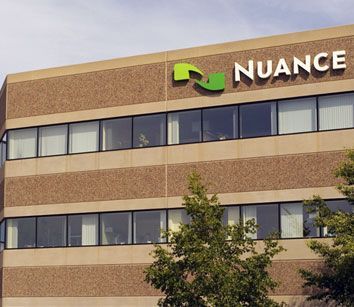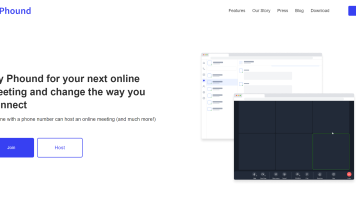It’s no secret that voice interfaces have become one of the most successful product categories in recent years. With the price point of smart speakers dropping to the same level as a week’s worth of Starbucks, many consumers have filled their homes with such devices.
successful product categories in recent years. With the price point of smart speakers dropping to the same level as a week’s worth of Starbucks, many consumers have filled their homes with such devices.
All of this is great news for Nuance as they have been a leader in the voice recognition space for decades.
As this tech has evolved to become intelligent assistants, the company has invested in organic growth and acquisitions to stay ahead of the curve.
Speaking of acquisitions we remember when past ITEXPO keynoter Steve Wozniak mistakenly mentioned that Apple was going to purchase Nuance. Sometimes you can be correct but just early. This could be the case as Apple is failing in the Smart Speaker market with its overpriced HomePod. It may be forced to buy Nuance for its voice technology. Yes, they can license but they likely need to differentiate via ownership.
While we are off on a tangent, it’s worth mentioning the company has a new CEO Mark Benjamin who was COO of NCR. Could becoming a more attractive acquisition target be part of his mandate? We’ll see.
I recently met with Jamie Flores (pictured), Manager, Core Technologies at Nuance to learn more about what the company is up to. The last discussion we had with the company discussed how Nuance was getting into and beginning to dominate the omnichannel AI space. Now they have advanced their AI-powered engine for conversational dialog.

The new set of core engine capabilities, together making up the Voice Engagement Platform, allow for better self-service and automation, setting a new bar in the industry for conversational, intelligent, customer experience across voice and digital channels. These core capabilities are based on significant advancements in automatic, AI-powered speech recognition and text-to-speech technologies that enable human-like dialog to provide enhanced customer experiences while keeping costs in check. Features include:
- Contextual, intelligent natural dialog – High-accuracy speech recognition and real-time, continuous speech-to-text conversion that supports complex dialog between brand and consumer across channels, including the ability to recognize multiple concepts and respond to changing intent – areas where consumer-grade assistants often fail
- Zoe – New voice from AI-powered text-to-speech engine that leverages deep neural networks (DNNs) to synthesize natural sounding voices (listen here). Speech can be customized to an organization’s brand identity through robust vertical domain customization, with 53 languages and 119 voice options, 17 of which are multi-lingual
- DIY tooling and NLU starter packs – Easier to use tools and starter packs based on the most common terminology by industry allow customers to accelerate development time and more easily build cross-channel applications, including the ability to maximize prior investments in IVRs and web-based virtual assistants to inform and improve automated customer dialog
- Reporting and analytics with Nuance Insights – Intelligence derived from IVR and third-party data informs ongoing speech application optimization to improve ROI, providing near real-time visibility into KPIs and changing usage trends through out-of-the-box and customizable reports, a modern and easy-to-use user interface and drill down capabilities for multi-level analysis
“Voice is the conversational interface of tomorrow and for businesses to compete for customer loyalty, it is important to meet consumers on the channels they most engage,” said Tony Lorentzen, SVP & General Manager, Voice and Security Solutions, Nuance Enterprise division. “Our Omni-channel Customer Engagement Platform uses AI to help customers quickly and efficiently design a strategy that leverages their past IVR investments and advances their ability to unite that with digital virtual assistants and voice-powered IoT devices, creating a cohesive experience that is cost-effective and supportive of the modern environment.”
Jamie explained that their next-gen recognizer and TTS engine is capable of more granular speech with inflections for questions. In addition, there is voice biometrics. He said, ” People are speaking to everything. They are being trained.” He continued, “People expect their companies to have the same experience. They expect them to evolve the old school menus.”
They also leverage the latest AI and machine learning technology allowing for real-time data pruning autonomous learning for continual grammar improvement.
The bottom line is Nuance is bringing the technology we enjoy in our smart speakers to organizations; Allowing them to give customers the same seamless experiences they have grown accustomed to in their homes and thus powering the voice economy.





